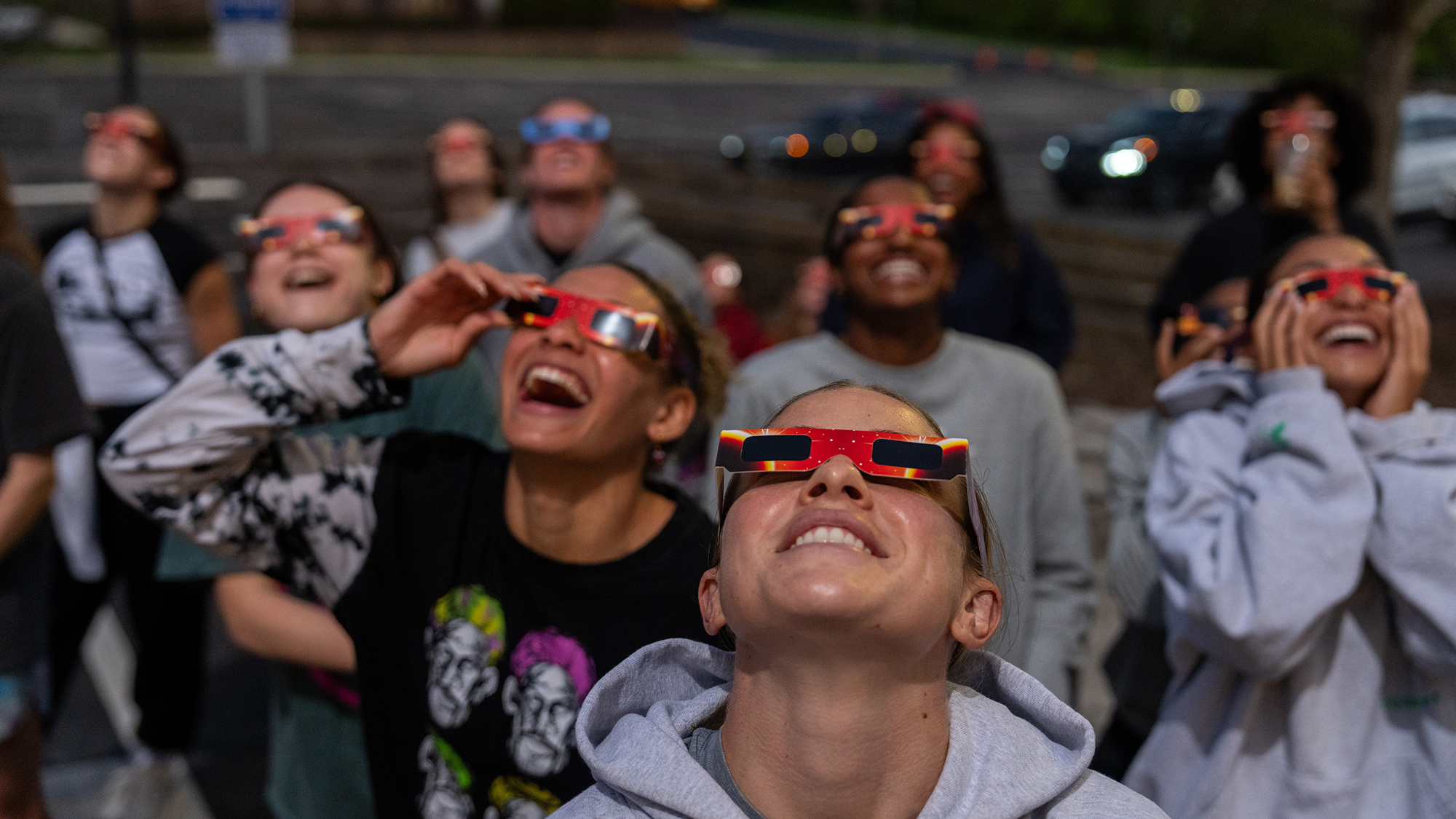

New data indicates a once-in-a-generation eclipse is a pretty surefire way to convince people to finally log off the internet—at least for a few minutes. According to estimates from cloud-computing provider Cloudflare, yesterday’s online traffic dropped between 40-60 percent week-to-week within the April 8 eclipse’s path of totality. In aggregate terms for the US, “bytes delivered traffic dropped by 8 percent and request traffic by 12 percent as compared to the previous week” around 2:00pm EST.
According to NASA, yesterday’s path of totality included a roughly 110-mile-wide stretch of land as it passed across Mazatlán, Mexico, through 13 states within the continental US, and finally over Montreal, Canada. In America alone, an estimated 52 million people lived within the eclipse’s path of totality. And it certainly seems like a lot of them put down their phones and laptops to go outside and have a look.
[Related: What a total eclipse looks like from space.]
As The New York Times highlights, Vermont saw the largest mass log-off, with an estimated 60-percent drop in internet usage compared to the week prior. South Carolinians, meanwhile, appeared to be the least compelled to take a computer break, since their traffic only dipped by around four percent.

Interestingly, you can also glean a bit about weather conditions during the eclipse from taking a look at Cloudflare’s internet usage map of the US. While most of the states within the event’s trajectory showcase pretty sizable downturns, Texas only experienced a 15 percent reduction. But given a large part of the Lone Star State endured severe weather conditions, it’s likely many people remained inside—maybe even online to livestream the views of the eclipse elsewhere.
[Related: The full sensory experience of an eclipse totality, from inside a convertible in Texas.]
So what were people doing if they weren’t posting through the eclipse? Well, snapping photos of the moment is always pretty popular, while NASA oversaw multiple volunteer research projects.
Judging from Cloudflare’s data, it didn’t take long for people to log back online once the eclipse ended above them. Usage appeared to spike back to pretty standard levels almost exactly in time with the event’s ending in any given state. No doubt most people rushed to post their reactions, photos, and videos… but maybe yesterday will still serve as a nice reminder that there’s a lot more to see when you take a break and go outside for a bit.
